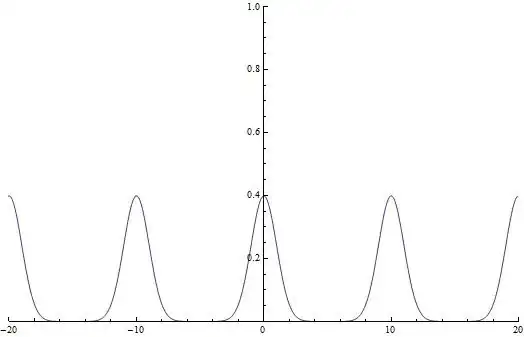I have some function, say, Gauss PDF

Now I want it to repeat, say, every N units

How to transform any function this way?
I know I can sum function at each shift. But is it possible to convert argument only? I.e. apply some transform to $x$ only?
UPDATE
Ideally, I would like to find $g_T(t)$ such that
$\sum\limits_{n=-\infty}^{\infty}F(t+nT) = F(g_T(t))$
where $n \in Z$, $F$ is any function and $T$ is desired period.
I don't know if it is possible in principle, for example, endless summing may produce infinities everywhere. In this case one may introduce some weighting in lefthand side...
UPDATE 1
My be lefthand size should be
$\lim\limits_{k \to +\infty}\frac{1}{2k}\sum\limits_{n \in Z}F(t+nT)$